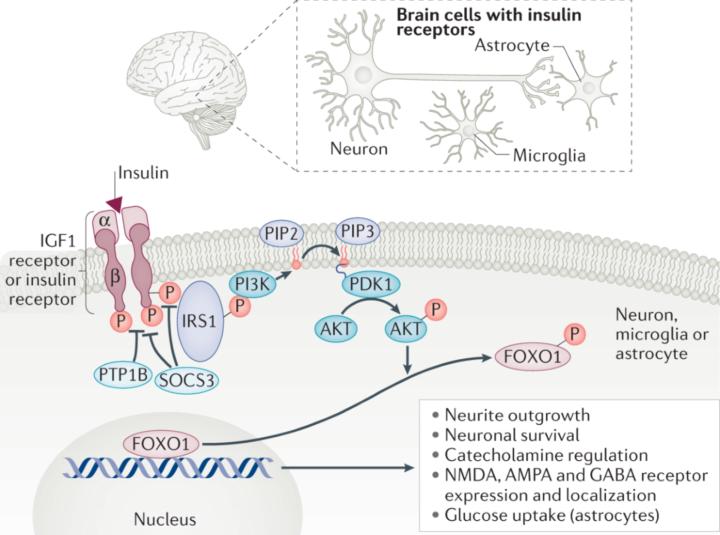Activity
Mon
Wed
Fri
Sun
Jan
Feb
Mar
Apr
May
Jun
Jul
Aug
Sep
Oct
Nov
Dec
What is this?
Less
More
Memberships
Castore: Built to Adapt
532 members • Free
58 contributions to Castore: Built to Adapt
Methylene Blue, Urine Color, and What It Reveals About Redox, Mitochondria, and Systemic Stress
Methylene blue is one of the most unusual therapeutic molecules in medicine because it behaves like a living sensor inside the body. It changes color depending on its electron state, donates and accepts electrons depending on mitochondrial demand, bypasses damaged respiratory complexes, and flows directly into the bloodstream, nervous system, and organs as a redox-active dye. While people know it turns urine blue, they rarely understand why that color appears, why the duration changes, and how those changes can reveal meaningful information about mitochondrial efficiency, liver and kidney function, and global redox tone. The truth is that the color shift is not just a cosmetic effect; it is a visible expression of the electron flow inside your cells. The speed at which urine returns to its normal yellow color becomes a rough, experiential marker of how well your body’s redox machinery is cycling. To understand this, the first step is recognizing that methylene blue exists in two major states: its oxidized form (bright blue) and its reduced form, leucomethylene blue, which is colorless. These two forms constantly convert into one another based on the availability of electrons. When methylene blue accepts electrons, it becomes colorless. When it donates electrons, it becomes blue again. This redox cycling is what makes methylene blue so therapeutically valuable it acts like a smart shuttle that smooths out problems in the electron transport chain, especially when complex I or III are underperforming. When mitochondria are stressed, over-reduced, under-fueled, oxidatively burdened, or deprived of NAD+, methylene blue helps buffer the system by accepting excess electrons or donating needed electrons. It reduces oxidative stress, stabilizes the flow of energy, and helps maintain membrane potential. But because it is also a dye, these internal dynamics show up externally, especially in urine. The moment methylene blue enters the bloodstream, the body begins metabolizing it in the liver, reducing it, cycling it, moving it into tissues, and eventually clearing it through the kidneys. The exact hue you see in the toilet depends on two things: how much of the molecule remains in its oxidized blue form versus its reduced colorless form, and how concentrated your urine is. Dark, heavily oxidized methylene blue produces a vivid blue-green color. When most of the MB is reduced and colorless, urine appears normal or lightly tinted. This is why two people taking the same dose can see dramatically different colors. The real insight emerges when you track how long the color lasts.
You’re Fit, Lean… and Foggy? The Hidden Form of Insulin Resistance No One Is Talking About.
Thanksgiving has a way of slowing life down just enough for you to actually notice what’s been happening underneath all the noise. You sit with people you love, share a big meal, breathe for the first time in weeks, and suddenly you’re able to feel things you usually ignore. Maybe this year, in that moment of stillness, you noticed something strange: your body feels strong, your training is dialed in, your glucose looks perfect… but your brain doesn’t match how good the rest of you feels. Maybe you felt foggy after a meal, mentally slower than usual, overwhelmed for no reason, or just “not as sharp,” even though everything on paper says you’re metabolically healthy. If that sounds familiar, you are not alone and there’s a real physiological explanation behind it. How can someone be physically insulin-sensitive yet mentally sluggish? How can your muscles get the fuel they need while your brain feels like it’s running on fumes? This article is written for you, to answer exactly that question. Central insulin resistance is the phenomenon where your brain becomes insulin-resistant even when the rest of your body remains highly insulin-sensitive. Many people experience this as a strange mismatch: they feel physically strong, metabolically healthy, and steady during training, yet their cognition feels foggy, slow, unpredictable, overwhelmed, or “under-powered.” This article explains why that happens, what the mechanisms are, how to recognize the patterns, and how to fix them, using simple language without sacrificing the biochemical accuracy that clinicians and experts expect. The first thing to understand is that the brain handles insulin differently from the rest of the body. Your muscles and liver respond directly to insulin in the bloodstream. The brain does not. For insulin to have any effect in the brain, it must cross the blood–brain barrier, bind to receptors on neurons, activate the PI3K-Akt pathway, and allow neurons to take up and use glucose. If anything disrupts that sequence, neurons will be under-fueled even if the entire rest of the body is functioning perfectly. This is why someone can have excellent fasting glucose, low insulin, perfect CGM curves, and still feel terrible cognitively. The brain can become insulin-resistant before the body gives any signal.

BDNF: The Little Molecule That Turns Your Brain Into a Supercomputer and Your Body Into a Recovery Machine
Brain-derived neurotrophic factor is one of the most powerful molecules your nervous system produces. People often describe it as “brain fertilizer,” but that analogy only captures a small slice of its real function. BDNF is a master orchestrator of neural plasticity, mitochondrial performance, synapse formation, memory consolidation, resilience to stress, motivation, and even muscle repair. If neurons were plants, BDNF would be the combination of sunlight, water, and growth signals that allow them to sprout new branches, prune old ones, heal damage, and reshape themselves around new experiences. But unlike plants, neurons use this molecule not just to survive, but to adapt to the constantly changing demands of thought, movement, emotion, and metabolic stress. Understanding BDNF means understanding how the brain learns, how it recovers from injury, how muscle and brain communicate, and how lifestyle, stress, peptides, and metabolic signals all converge on the same pathways that determine whether your brain feels alive and adaptable or foggy and rigid. BDNF is a protein belonging to the neurotrophin family, the same evolutionary lineage as NGF, NT-3, and NT-4. These molecules keep neurons alive, guide their development, strengthen synapses, and regulate the plastic changes that allow memories to form. BDNF is produced widely in the brain, especially in the hippocampus, prefrontal cortex, amygdala, motor cortex, and cerebellum. These regions govern memory, emotional regulation, decision making, spatial navigation, threat assessment, learning speed, and movement coordination. BDNF is first made as proBDNF, a precursor that has opposite effects from mature BDNF. ProBDNF generally weakens synapses and promotes pruning, while mature BDNF strengthens synapses and promotes long-term potentiation. A healthy brain needs both the pruning signal to remove inefficient wiring and the growth signal to build new, stronger pathways. When inflammation, chronic stress, sleep loss, metabolic dysfunction, or trauma shift the balance toward excess proBDNF and insufficient mature BDNF, people experience depressive symptoms, reduced motivation, impaired learning, more anxiety, slower reaction times, and cognitive rigidity. When the balance shifts toward higher mature BDNF, people experience more focus, creativity, adaptability, emotional resilience, and capacity for learning new skills or recovering from injury.
Scientists Accidentally Discover Two Already FDA Approved Cancer Drugs That Reverse Alzheimer’s Brain Damage Here’s the Stunning Cellular Mechanism Behind It
Alzheimer’s disease begins not with memory loss, but with a cellular storm. Imagine a city where every streetlight, factory, and recycling plant runs on a perfect rhythm neurons, glia, and immune cells working as one metabolic symphony. Now imagine that city slowly losing power: waste piles up, energy grids flicker, communication lines jam. That’s what happens inside the Alzheimer’s brain. To understand how drugs like letrozole and irinotecan originally cancer treatments can reverse this, we first need to walk through the molecular collapse that creates beta-amyloid plaques and the tangled damage that follows. In healthy neurons, the amyloid precursor protein (APP) sits in the cell membrane like a signaling antenna. It helps neurons grow, form synapses, and repair after injury. Normally, APP is trimmed by enzymes called α- and γ-secretases, releasing soluble fragments that nourish the brain. But when metabolism falters particularly mitochondrial and lipid metabolism APP is cut instead by β- and γ-secretases. This alternate cut produces a sticky peptide called amyloid-β (Aβ). Small amounts of Aβ aren’t a problem; they help regulate synaptic firing. But when energy is low and oxidative stress rises, Aβ isn’t cleared fast enough by microglia or cerebrospinal flow. It aggregates into fibrils, then plaques, which clog the spaces between neurons like tar on city roads. The process starts in mitochondria. Neurons are energy-hungry, depending on oxidative phosphorylation to generate ATP. Mitochondria constantly divide (fission) and merge (fusion) to maintain redox balance, clean up damaged proteins through mitophagy, and regulate calcium signals that drive learning and memory. In Alzheimer’s, mitochondrial DNA mutations, oxidative stress, and disrupted NAD⁺/NADH ratios cripple this system. Less ATP means ion pumps fail, calcium floods the cell, and reactive oxygen species (ROS) build up. These oxidize lipids and proteins, damaging mitochondrial membranes rich in cardiolipin. Damaged mitochondria release danger signals that activate glial cells and push the neuron toward self-destruction.
Day 10 – Integration: From Cellular Harmony to Collective Impact
Pre-Breath Calibration 1. Sit or stand tall. 2. Inhale through your nose for 4 seconds, lifting gently through your ribs. 3. Hold for 2 seconds, noticing the stillness. 4. Exhale slowly through your mouth for 6 seconds, releasing any tension. 5. Pause briefly and sense that quiet coherence expanding. Everything we’ve practiced until now coherence, resonance, fractals, reciprocity, structure, harmonic tension, and magnetism has been about building personal alignment. Today, we close the loop. Integration is the process of scaling that inner harmony outward, allowing your biology, relationships, and purpose to operate as one unified field. At the smallest scale, mitochondria synchronize energy flow within a cell. When millions of cells do this together, a tissue comes alive. When those tissues coordinate, an organism thrives. Integration is that same principle expressed through your life individual coherence scaling into collective coherence. When your physiology, emotions, and actions are aligned, your energy becomes consistent. That consistency creates trust. People and opportunities begin to organize around you because your presence broadcasts stability. Integration isn’t about perfection it’s about continuity: being the same person in every environment because your inner architecture doesn’t fracture under pressure. Think of integration like musical harmony. Each note your thoughts, habits, relationships, and actions has its own tone. When those tones are in tune, they create resonance. When one is off, the whole system sounds dissonant. The work is not to play one perfect note forever, but to keep tuning so the song continues. At the biological level, integration happens when separate systems stop competing and start collaborating. The nervous system and immune system, for example, used to be studied separately. Now we know they’re interwoven: inflammation affects emotion, and emotion affects healing. Similarly, your professional, physical, and personal lives are not separate domains they’re one ecosystem. The way you train, eat, think, and speak all feed the same signal. Integration is living as a unified system rather than a collection of parts.
1-10 of 58
@yekaterina-kuznetsova-2824
Primary care physician from NYC, can’t wait to learn
Active 5d ago
Joined Aug 1, 2025
Powered by


